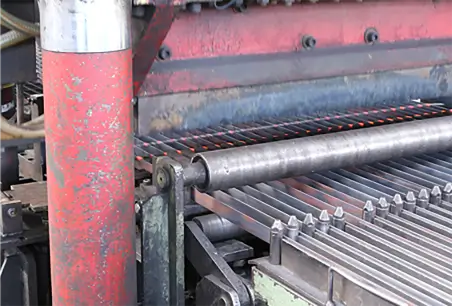The Versatility of Perforated Copper Foil Applications and Benefits
Perforated copper foil is a unique and versatile material that has garnered attention across various industries due to its numerous beneficial properties. Characterized by small holes or patterns punched through the material, perforated copper foil serves a variety of functions and applications ranging from electronics to architecture. Understanding the features, advantages, and uses of this innovative product can illuminate its remarkable role in modern technology and design.
Properties of Perforated Copper Foil
Copper itself is renowned for its excellent electrical conductivity, thermal conductivity, and corrosion resistance. When combined with the perforation process, these properties are enhanced in ways that open new avenues for application. Perforated copper foil is typically lightweight, making it easier to handle and utilize in various contexts, while its porous structure allows for greater airflow, making it suitable for heat dissipation applications. Additionally, the aesthetics of copper—its rich color and sheen—can add a unique visual element to designs, providing both functionality and beauty.
Applications in Electronics
One of the most prominent applications of perforated copper foil is in the field of electronics. The perforation allows for reduced weight and bulk, making it easier to incorporate into electronic devices without sacrificing performance. For example, in printed circuit boards (PCBs), perforated copper foil can be used to create efficient heat sinks that enhance the thermal management of the components. Furthermore, the ability to customize the hole patterns can optimize the flow of electrical signal paths, making it a critical component in modern electronic design.
Architectural and Decorative Uses
Beyond electronics, perforated copper foil has found a niche in architecture and design. Its aesthetic appeal allows architects and designers to incorporate it into building facades, ceiling tiles, and decorative panels. The perforations can be designed in various patterns, allowing for creative expression while simultaneously providing functionality. For instance, perforated copper can serve as sunshades or privacy screens, controlling light and visibility without compromising airflow. This innovative use of materials allows for versatile building designs that are both sustainable and visually engaging.
perforated copper foil

Benefits of Using Perforated Copper Foil
The advantages of perforated copper foil extend beyond its applications. One notable benefit is its ability to improve heat dissipation. In many electronic applications, managing temperature is crucial to maintaining performance and longevity. The perforations facilitate airflow, enabling heat to escape more effectively than solid materials, thereby enhancing the overall efficiency of devices.
Moreover, perforated copper foil can also be a sustainable choice. Copper is a recyclable material, and using it in perforated forms can reduce the amount of raw material required for various applications. This not only conserves resources but also minimizes waste, aligning with the growing demand for environmentally friendly construction and manufacturing practices.
Challenges and Considerations
Despite its many benefits, there are challenges associated with using perforated copper foil. The perforation process can introduce weaknesses into the material, which may affect its overall strength. As such, careful consideration must be given to the design and pattern of the perforations to ensure that they meet the required performance standards. Additionally, the cost of perforated copper foil may be higher than traditional copper sheets, which can be a consideration for budget-conscious projects.
Conclusion
Perforated copper foil represents a remarkable blend of functionality and aesthetics, making it an invaluable material in various fields. Its applications in electronics, architecture, and beyond showcase its versatility and effectiveness in enhancing product performance while contributing to innovative design solutions. As industries continue to prioritize sustainability and efficiency, the role of perforated copper foil is likely to expand, driving further advancements in technology and design. Understanding this unique material's properties and uses is crucial for professionals across disciplines who seek to harness its potential in future projects.
-
The Best Metal Mesh Solutions: Expanded Aluminum Metal vs. Expanded Stainless Steel Metal
NewsSep.10,2024
-
Round Perforated Sheets vs. Hexagonal Perforated Sheets vs. Embossed Perforated Sheet Metal
NewsSep.10,2024
-
Perforated Metal Sheets
NewsSep.10,2024
-
Experience The Excellence Of Stainless Steel Grating
NewsSep.10,2024
-
Discover the Versatility Of Metal Mesh Expanded Forming Machines
NewsSep.10,2024
-
Discover The Advantages Of Steel Grating For Sale
NewsSep.10,2024
Subscribe now!
Stay up to date with the latest on Fry Steeland industry news.

